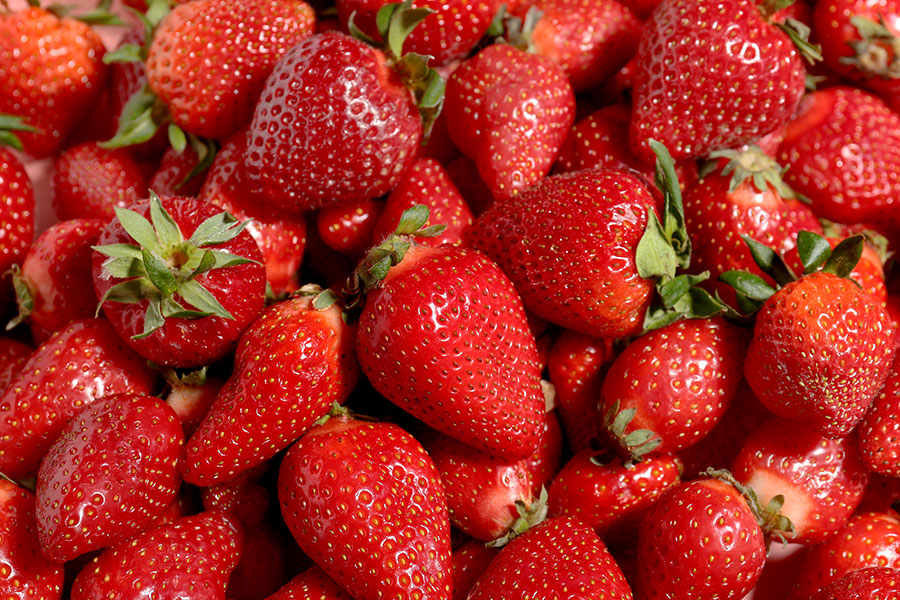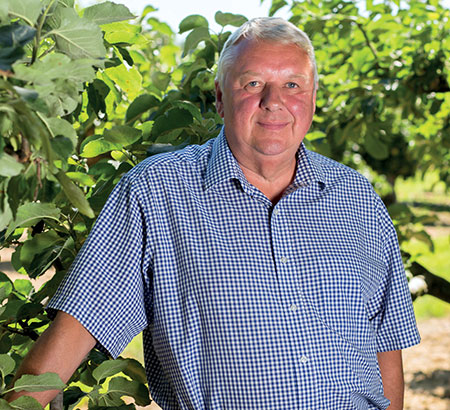The future is bright for British berries
22nd May 2024
The retail sales value of fresh berries has more than doubled in the past decade, and despite soaring costs of production and substantial labour challenges, the sector continues to expand. We spoke to British Berry Growers chairman Nick Marston, about future challenges and opportunities.

Q. How has the berry sector evolved in the past 10 years?
A: In 2013, the year-round fresh berry business in the UK was worth £779 million in retail sales value (Kantar). In 2023 it was 1.8 billion. British Berry Growers’ members produced 67,000 tonnes in 2013 and 111,000 tonnes in 2023, so again, significant growth. There was always a popular belief that the winter season was the big opportunity, but actually, UK main season is still showing significant growth – 11% last year compared to 2022.
Q. What factors have had the biggest impact?
A: Current berry varieties have consistently better flavour and shelf life than 10 years ago, whether it’s winter season or UK main season. There’s also better year-round availability. This is also down to modern techniques – polytunnels and substrate systems with irrigation.
Q. What are the biggest challenges?
A: It’s a significant marketplace, but growers have seen their costs increase massively, primarily due to direct labour, which accounts for over 50% of the cost of production for fresh berries. Labour costs have inflated substantially over the years – that’s inevitable. I don’t think anybody’s expecting cheap labour, and that’s not what we want. We want effective labour.
Q. What would you like to see change?
A: Firstly, we’d like to see the six-month visa under the Seasonal Agricultural Workers Scheme extended to nine months – we have a long season, and the last thing growers want to be doing is re-recruiting six months in. Secondly, we’re calling for growers to be able to recruit directly overseas. Currently, visas are given to commercial organisations who make a profit out of supplying labour.
Retailers must also address the fact that growers are not making a profit, and if they don’t make a profit, they won’t reinvest, and if they don’t reinvest, production will dwindle. Retailers could not go elsewhere and buy anything like the volumes they require, so they do need to ensure growers are financially sustainable. A lot of that is about the share of inflation.
From 2021–2023, the average cost of production of a 400g punnet of strawberries increased by 18p, according to Anderson’s. In the same period, the average retail selling price across the whole market increased by 27p (Kantar). According to our autumn survey, over those two years, growers received an extra 3.6p on average. That just doesn’t add up.
Additionally, retailers are very often not agreeing contracts until early- to mid-spring when growers are already committed with the crop in the ground. We’re looking for a much longer time scale for those contracts and price discussions.
We lobby the government, hold meetings with the retailers and raise these issues in the media wherever appropriate, but as we’re not a marketing board it’s important that growers, their organisations and retailers engage to address the issues.
Q. Do you see robotics being important in the sector?
A: There’s a lot of work being done on technology. Table strawberry production in substrate reduces the cost of picking massively per kilogramme.
There are quite a few robotic projects and some of them are quite advanced – we have robots that will pick strawberries, but my estimation is it will be a minimum of 10 years before they are picking effectively. Also, large numbers of robots would be required by the UK berry industry, which would need manufacturing and financing.
Q. What do you think the future holds for berries?
A: Fresh berries are outperforming fresh fruit – they’re in significant growth in an era where food category growth is pretty static. If we look at mainland Europe, there’s a strawberry shortage – the German production area has reduced by 14% over the last decade and most of the production area is strawberries planted straight in the ground – low yielding and high labour. So there’s a huge opportunity with our temperate climate and abilities. Our growers are amongst the world’s best in substrate production and most of our production is under polytunnels and in substrate. We’re very well equipped to build an export business.
Berry growing doesn’t require big land areas, and growing systems are heavily controlled under polytunnels with trickle irrigation systems. Berries use less water than other crops and are not susceptible to heavy rainfall etc. There’s also a great deal of work to address the environmental impact of berry growing, including capturing and storing rainwater that runs off polytunnels, and solar photovoltaic panels on top of the tunnels.
We’re asking the government to consider intensive horticulture a ‘public good’ under the Environmental Land Management (ELM) scheme. Intensive horticulture feeds the nation and produces a large amount of our fresh food off a very small area. Why would you not channel some of that funding into environmentally friendly, intensive horticulture techniques?

We have the potential to have a very good future, but at the moment, there is serious work to be done.
Meet the expert
Nick Marston was managing director of Berry Gardens from 1995 to 2017 and has been a director of British Berry Growers since 1999 – becoming chairman in 2017.
British Berry Growers is a trade association representing 95% of the UK’s commercial soft fruit growers.
Read more fruit news
